This press release was part of a package of press releases and photos from eBay. It’s appears to be a press kit of some kind. There are four press releases total, each varying in size. This 14-page version A is the largest.
What is “pulling stone boat”? Apparently, the post-war jeep could do that better than the war-jeep (page A-6).
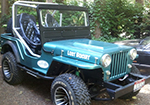
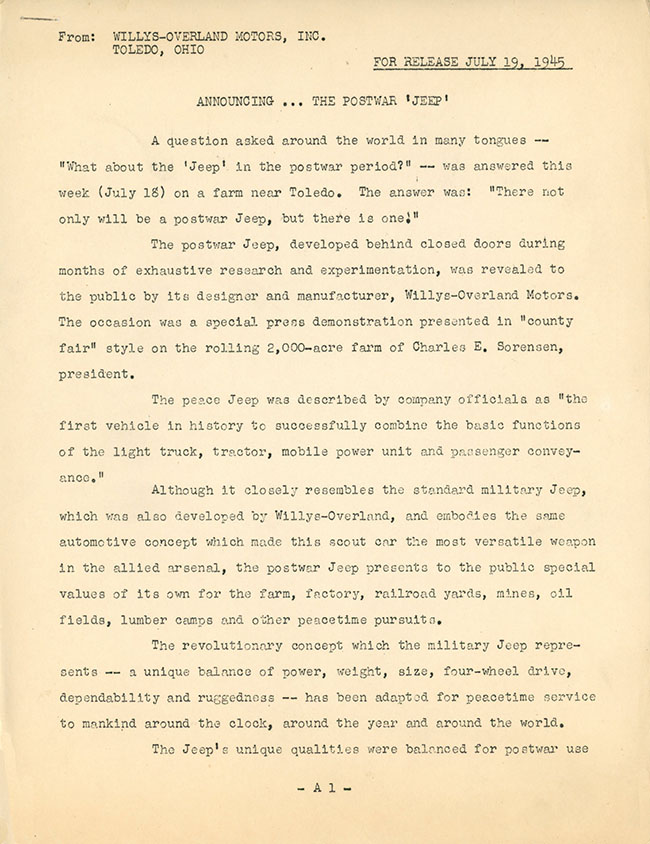
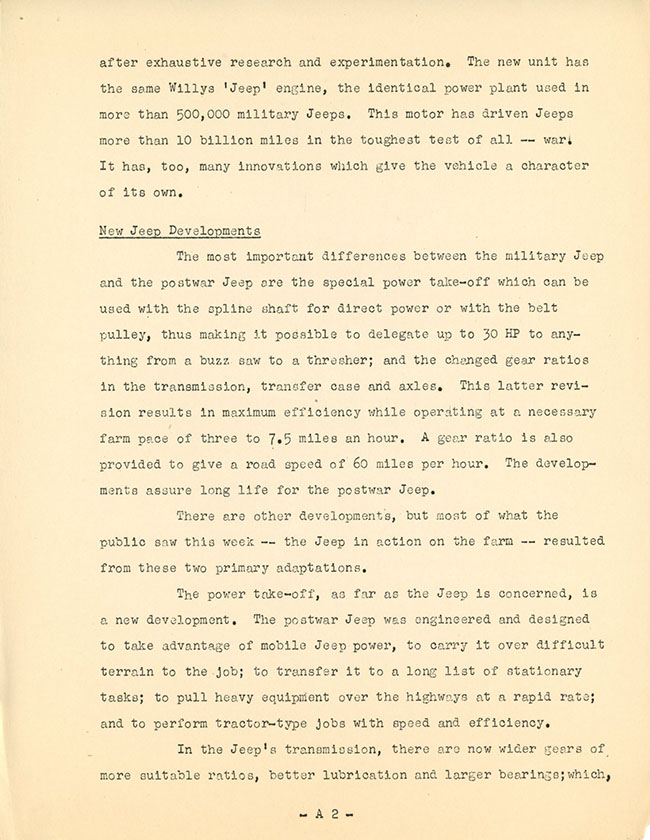

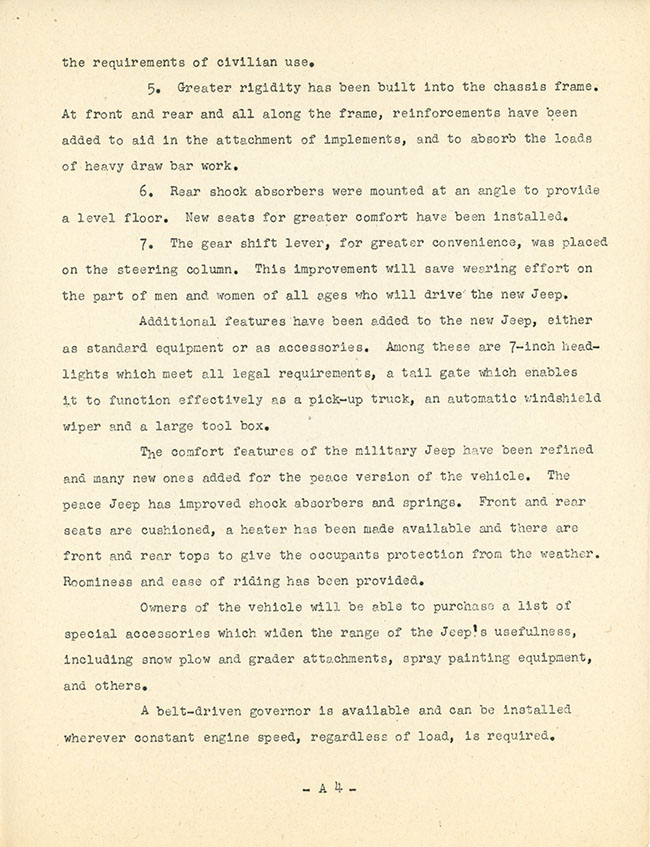
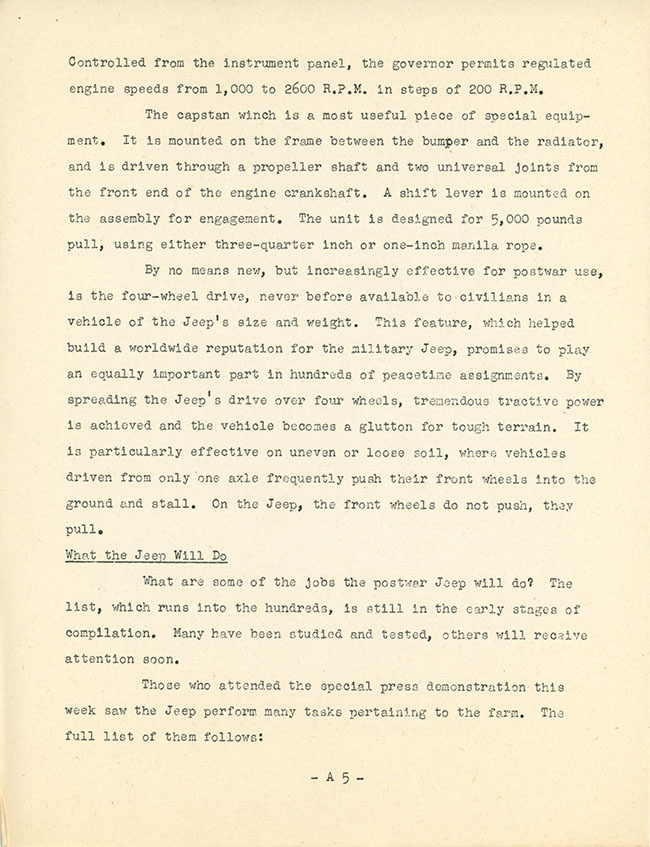
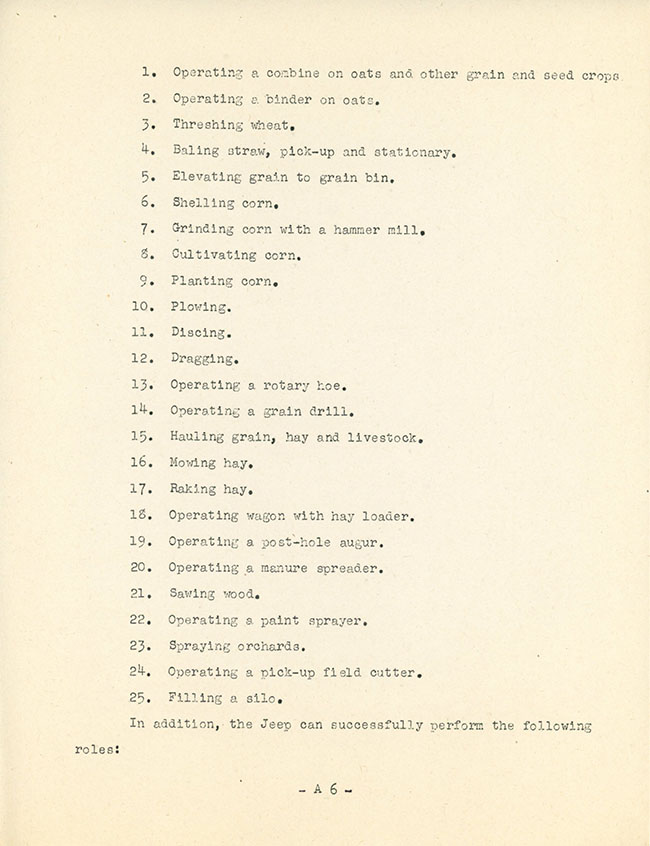
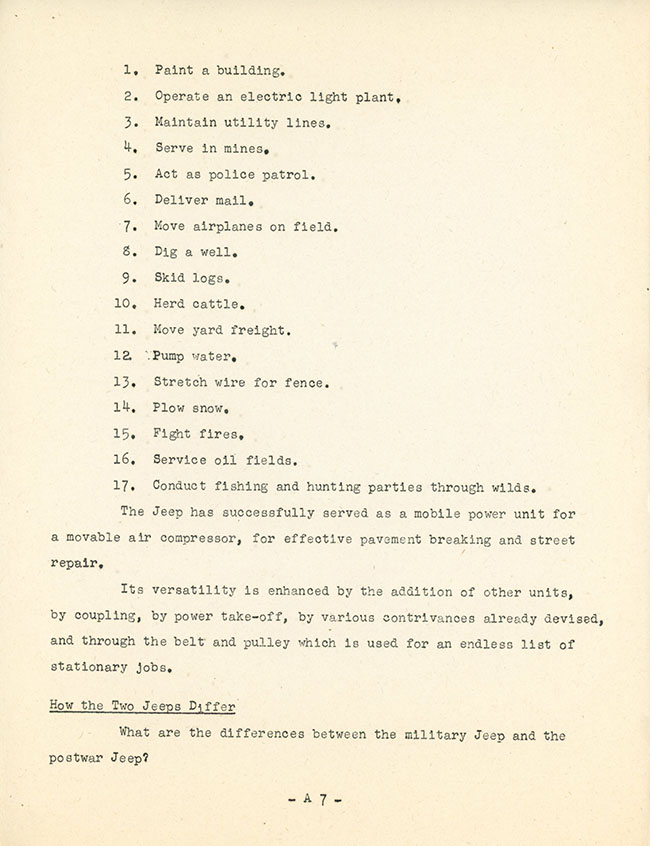
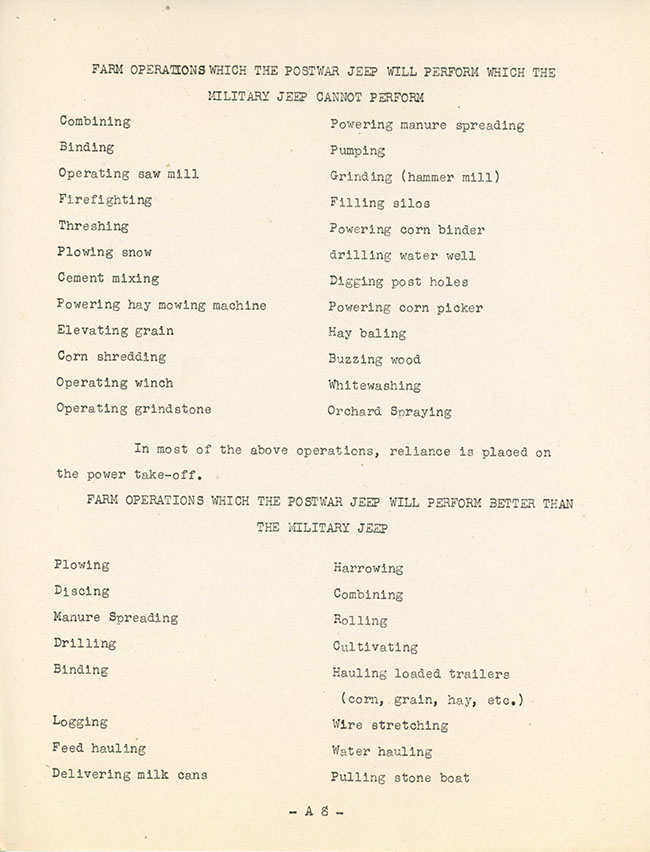
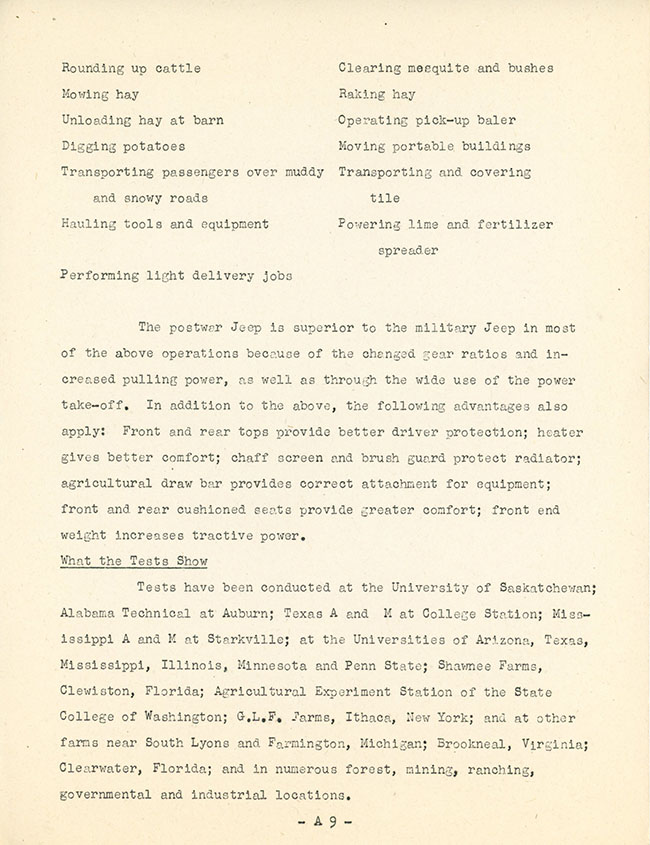
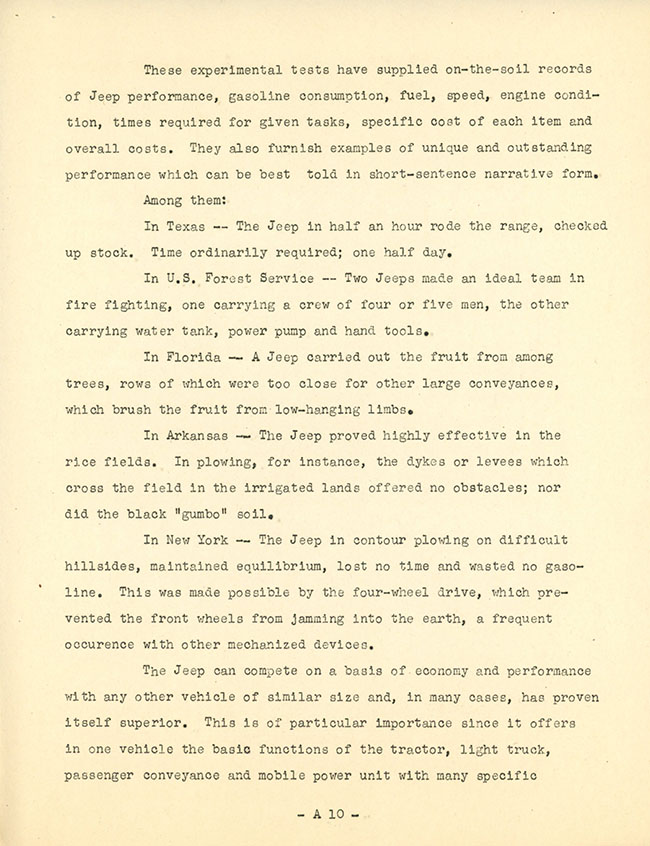
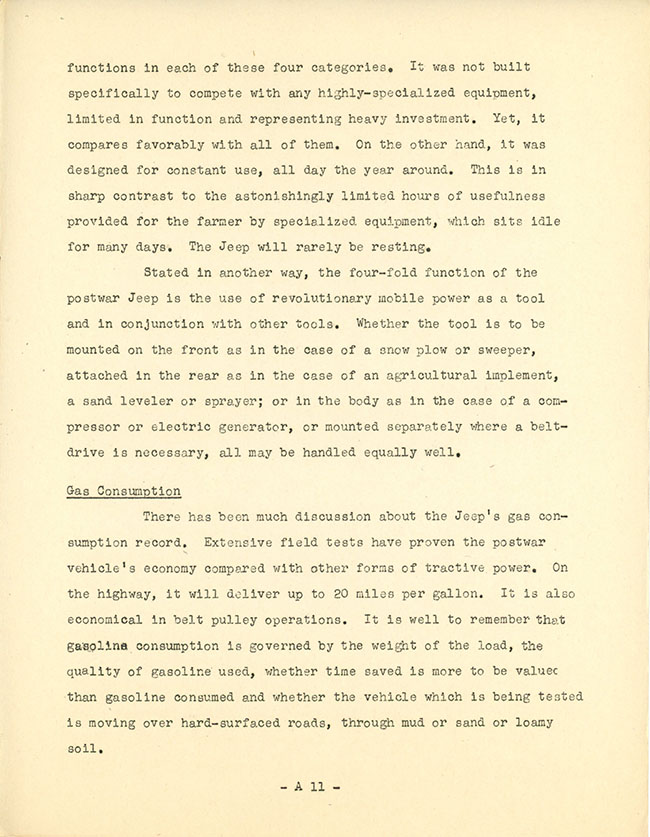
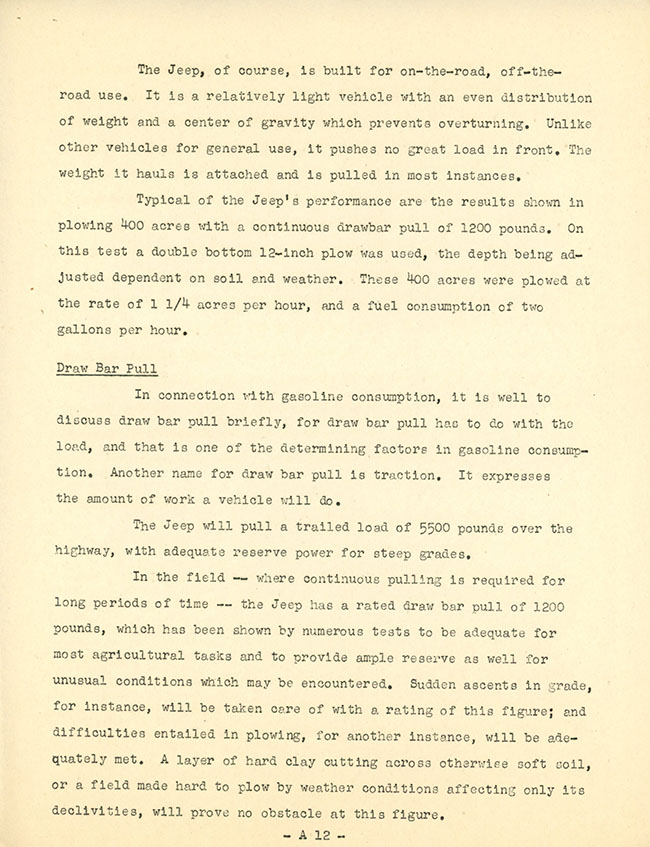
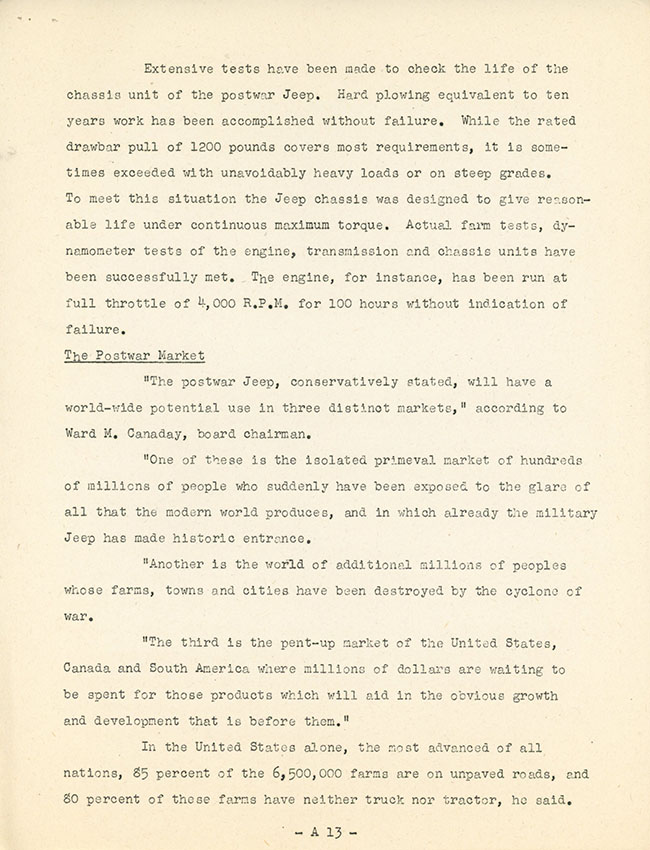
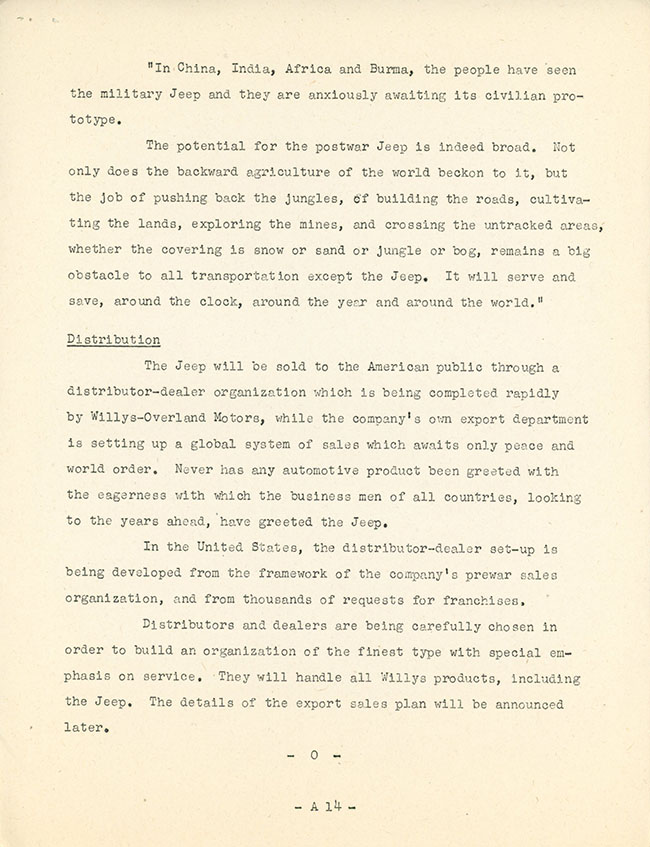
A ‘stone boat’ is a tough sled built to move big stones (small boulders?) without having to carry them. In the pioneer days, the loaded down sled would be dragged along using a team of horses. In theory a Jeep, using it’s well designed draw bar, could drag a loaded stone boat weighing 1,200 lb!!
Thanks Morgan. That makes sense.
We used the fork of a good sized tree 8-10 inches in diameter, cut down with a “Y” shape , and a 2×4 nailed to the wide end of the Y to haul large rocks and boulders, tied with a chain to the back of our 51 Jeep truck to haul some pretty good sized boulders in our canyon ranch in southeastern Arizona. Basically the same as a stone boat.
60 years ago we used the fork of a good sized tree 8-10 inches in diameter, cut down with a “Y” shape , and a 2×4 nailed to the wide end of the Y to haul large rocks and boulders, tied with a chain to the back of our 51 Jeep truck to haul some pretty good sized boulders in our canyon ranch in southeastern Arizona. Basically the same as a stone boat.
July 19, 1945 was the introduction of the CJ2A Civilian Jeep a Cesor Farm in Michigan.
The press releases were timed to coincide with that.
Dave,
You can see a stone boat in action in the Revolution in Pleasantville at about the 1:30 mark –
https://www.youtube.com/watch?v=5iOUoVHRFvQ&feature=youtu.be
My guess is that the motivation for this campaign was to combat military surplus jeeps anticipated to become available in large numbers? During the war, my friend’s father ran a motor pool in Asia. At the end of the war they worked hard to fix as many jeeps as they could. These were loaded onto a ship along with them for the return home. Halfway across the Pacific they were given a command to dump all the jeeps into the ocean. He always speculated it was due to pressure from Willys in Washington DC, so as not to kill the post war sales.
Which war? WWII… ? The WWII Jeeps were needed in Korea, and if they had ‘good’ Jeeps, they presumably wouldn’t have opened reconditioning centers in occupied Japan.
I’ve been through the Automotive War Council records many times, looking at original documents and correspondence between Ward Canaday and George Romney planning for the return of Civilian Auto Production. Willys was very vocal about the low production limits allowed, but there were no records that indicated an order to dump Jeeps that I saw. Planes and tanks, yes.
<-- wondering if he's the only one who didn't know what a stone boat was ... must have been my sheltered childhood ...
I too have heard the stories that jeeps were dumped, usually by children or friends who knew someone who was there. Certainly some jeeps were dumped at Million Dollar Point, as there are a few jeeps still there (apparently by the Seabees https://en.wikipedia.org/wiki/Seabees_in_World_War_II). But, how many jeeps will likely remain a mystery.
I can also imagine, as Kieth notes, that locating documentary evidence of dumping is near impossible to find, due to the mad post-end-war scramble. So, the rumors of dumping will likely remain just that, rumors, as nearly all the principle soldiers have passed.
Finally, I have to imagine that the end of the war was a big, mad scramble, in part to get soldiers home. If that meant shoving equipment overboard, so be it. Perhaps someone with more knowledge of the Navy than I can underscore what decision-making capacity the top ship brass had to dump equipment on their own?
What is documented is that Willys-Overland argued to Congress in 1944 that returning jeeps and selling them would bring enormous harm to the company, to its employees, and to the economy in general (https://www.google.com/books/edition/Disposition_of_Surplus_Property/jOL1iomchE4C?hl=en&gbpv=1&dq=willys-overland+wwii+jeep+disposal&pg=PA138&printsec=frontcover). So, W-O’s position was clear as of 1944; don’t bring a large volume of jeeps as surplus to sell.
We can see what happened when the M-151s were disposed of as salvage (and exactly what concerned Willys-Overland decades earlier). Enterprising folks bought the surplus-chopped-up M-151s and welded them back together, then resold them. So, when you see an M-151 ad with the terms “cut” or “uncut”, it’s referring to whether the body was cut up for salvage or not.